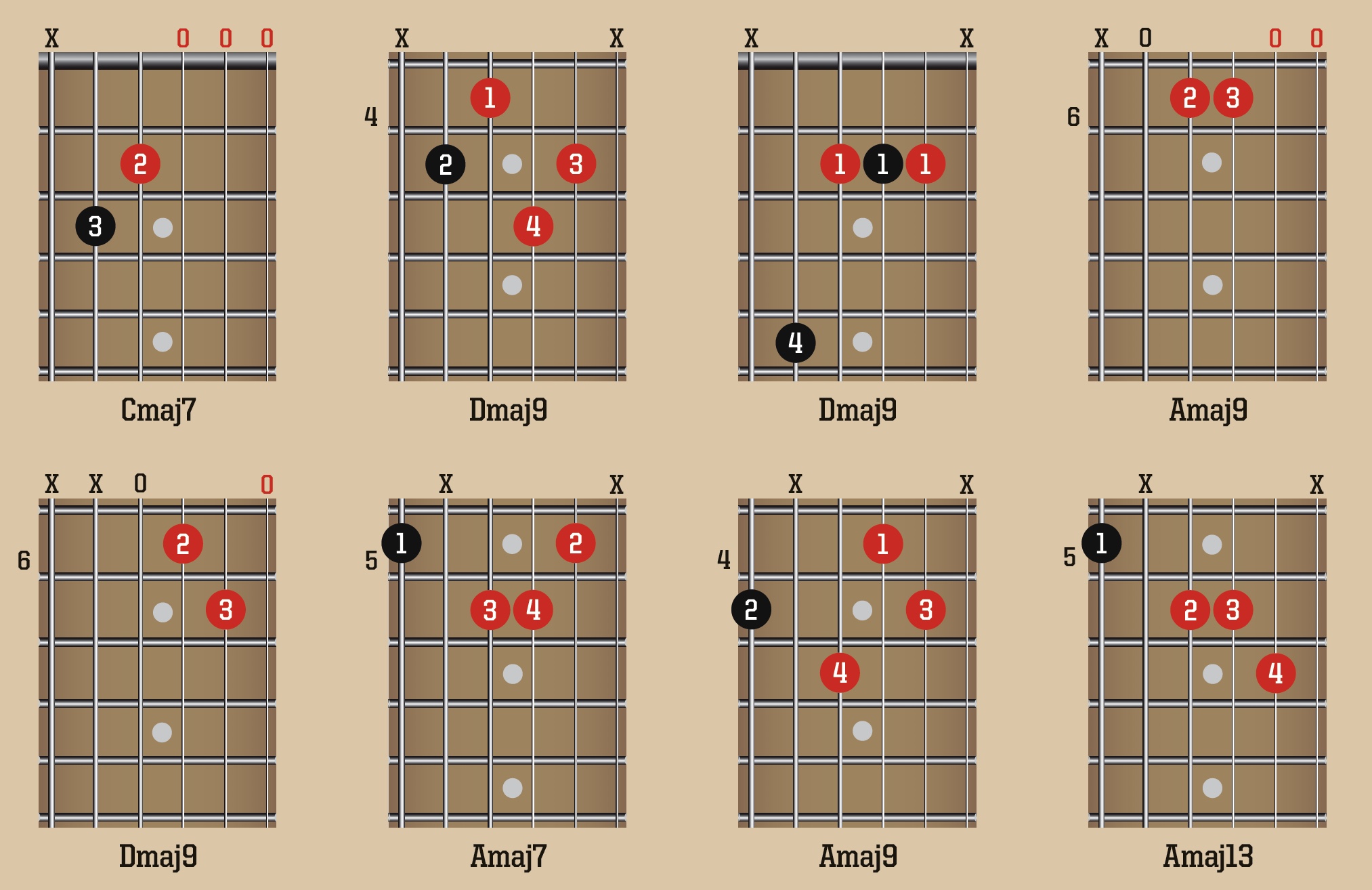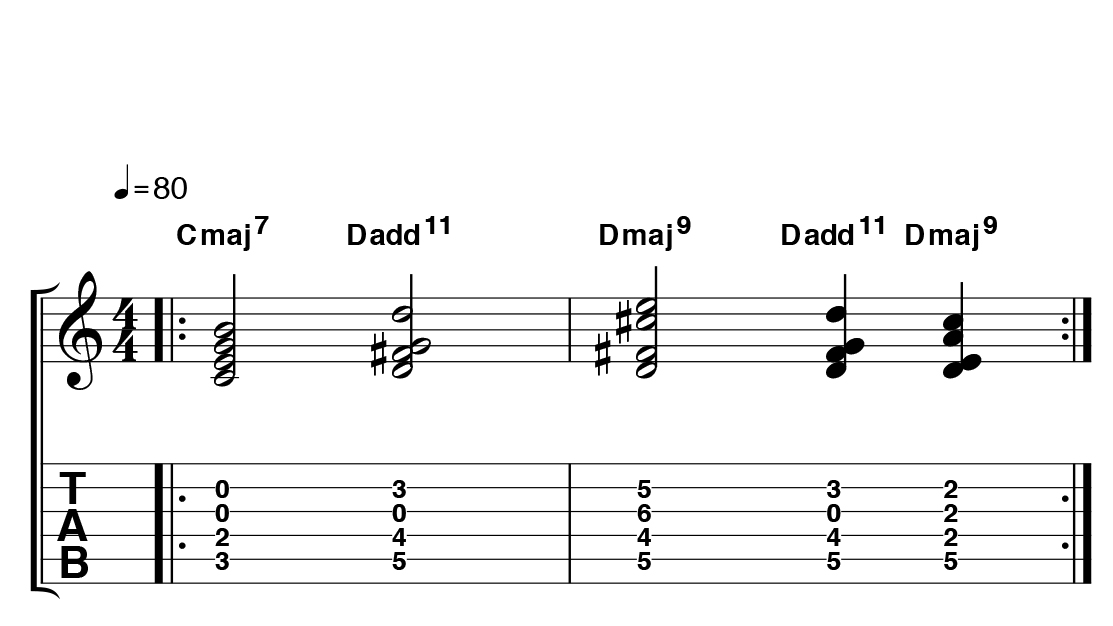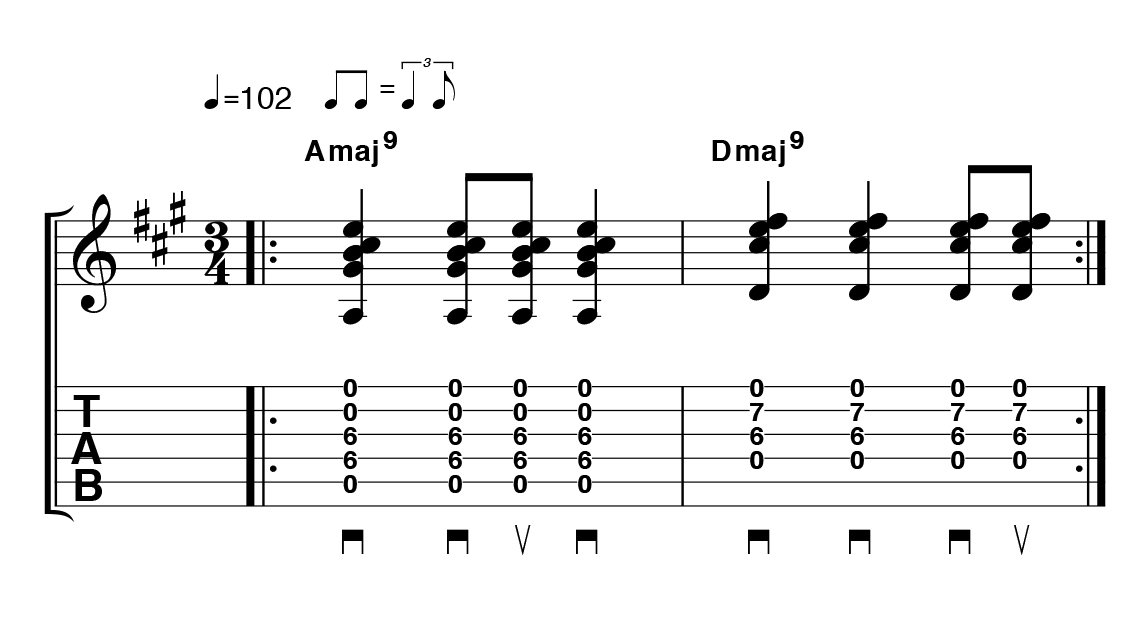Guitar lesson: learn major guitar chords
Guitar skills: Welcome to the world of bright-sounding major chords; simply add a handful of new notes to create lush, spacious sounds

Guitar skills: These extended chords are based on a major 7th chord. For example, a C chord contains C, E and G notes. These are the first, third and fifth notes of the C major scale (C D E F G A B). Add the seventh note (B) to make a Cmaj7 chord. Maj9, maj11 and maj13 chords simply add their respective notes to maj7 chord (D is the 9th, F is the 11th and A is the 13th).
You know them from:
• Marvin Gaye - What’s Going On
• Bread - Make It With You
• Smashing Pumpkins - 1979
When to use them:
1. For a chilled out sound
Major 7th chords have a pretty, relaxed sound. Try playing a simple progression such as C to F, then change the chords to Cmaj7 and Fmaj7 to hear the difference.
2. For a chilled out sound
Major 7th chords have a pretty, relaxed sound. Try playing a simple progression such as C to F, then change the chords to Cmaj7 and Fmaj7 to hear the difference.
Learning major chords
These chords are built from the notes of their respective major scales, so, for example, Cmaj7 (C E G B) uses notes from the C major scale (C D E F G A B); Amaj9 (A C# E G# B) takes notes from the A major scale (A B C# D E F# G#).
Get the MusicRadar Newsletter
Want all the hottest music and gear news, reviews, deals, features and more, direct to your inbox? Sign up here.

Exercise 1: Mmm, Nice!

Make the second string melody clear by emphasising the string with each pick stroke. Notice the relaxed maj7 and maj9 chords and the richer add11 sound.
Exercise 2: Shuffle Groove Chords

This folky acoustic line uses open strings to create ‘clusters’ of notes for a piano-like effect. Try adding in a few sus2 or sus4 chords for a similar vibe.
Total Guitar is Europe's best-selling guitar magazine.
Every month we feature interviews with the biggest names and hottest new acts in guitar land, plus Guest Lessons from the stars.
Finally, our Rocked & Rated section is the place to go for reviews, round-ups and help setting up your guitars and gear.
Subscribe: http://bit.ly/totalguitar










